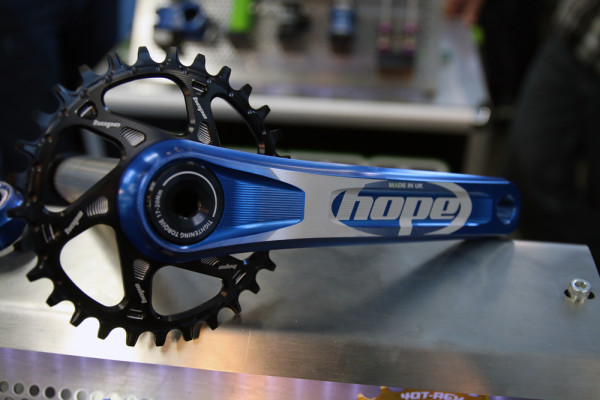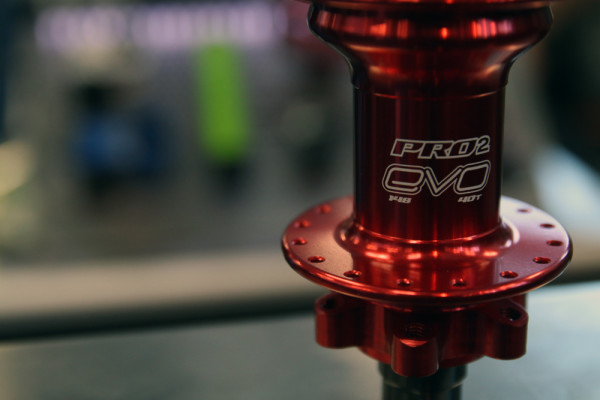After teasing us with the beautifully machined and anodized crank arms at a few different trade shows, Hope finally released their new crankset earlier this year. Adding to the expansive line of aluminum parts made in the UK, the modular crankset adds another option to give your self some drivetrain flexibility. Able to run either spiderless Retainer chainrings, single spiders for 104 BCD chainrings, or double 64/104 BCD spiders, the crankset also uses a swappable axle standard that we guessed would allow the crankset to be used on a number of different frames even though the initial launch was limited to 68/73 and 83mm options.
It didn’t take long before Hope made it to Frostbike where the new crankset was shown with an interesting new spindle…
Not much has been said about this fat bike crankset, but the FatSno logo laser etched onto the spindle gives it away. According to Hope the fat bike cranks are available now and simply have a longer spindle meant for a 100mm bottom bracket shells. Fat bike crank pricing is no different than standard 68/73 or 83mm spindle pricing with the crank arms and spindle selling for $350.
All of the crank spindles use the expanding spline system in place of more traditional friction fit. Hope states that this allows the crank arms to be installed and removed repeatedly without any change in the security of the crank arm’s mount to the spindle. All of the necessary tools are included with each crankset which includes the special bolt needed to tighten the internal wedge. Once tightened the wedge secures the spindle against the inside of the crank arm and then an additional fixing bolt is installed.
Complete sets of arms, an axle, and a spider will run $400, while the arms and axle alone will sell for $350. Additional spiders will be available for $65, and spiderless chainrings at $90 each.
The other shiny new object Hope had on hand is their Boost 148 compatible Pro2 Evo rear hub. Using a dedicated hub shell to actually take advantage of the wider hub spacing, the rest of the hub’s internals are the same you’ll find in other Pro2 hubs. If Boost 148 catches on, Hope and a few other manufacturers will be ready. Hope is selling the 148 Pro2 Evo hubs for $275.






